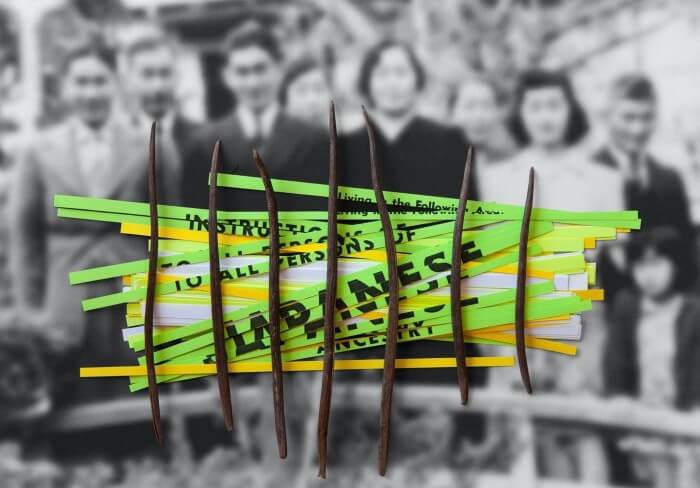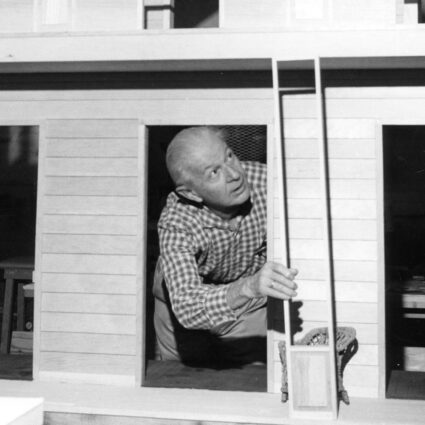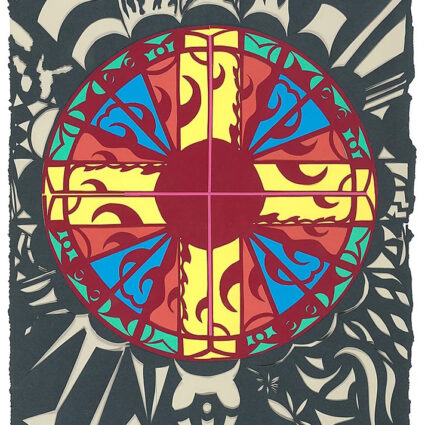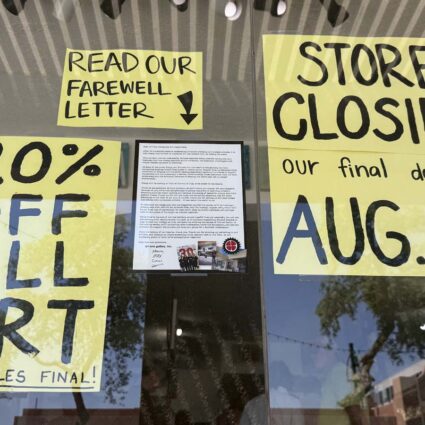In Balancing Cultures at Foto Forum Santa Fe, Jerry Takigawa reckons with family history and trauma, and finds beauty in the process.
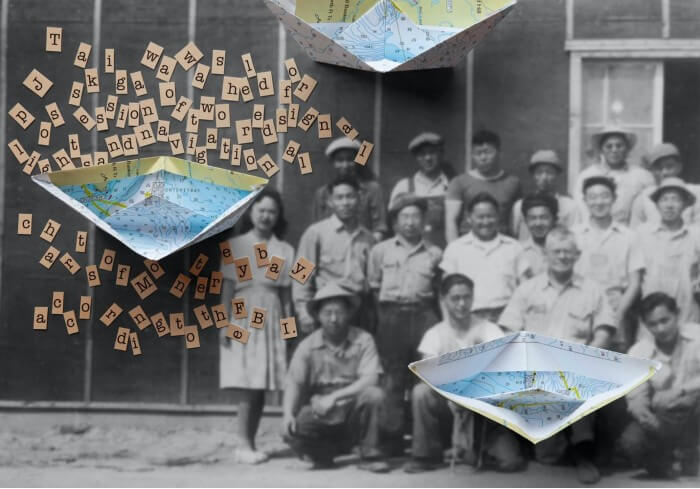
Jerry Takigawa: Balancing Cultures
August 6–September 30, 2021
Foto Forum Santa Fe
Jerry Takigawa’s images currently haunt the walls of Foto Forum Santa Fe, which is located just a few miles from the former site of the Department of Justice internment camp that incarcerated 4,555 men of Japanese ancestry some eighty years ago. Today, the United States is experiencing a sharp rise in anti-Asian sentiment and hate crimes. The convergence of these events cannot be overlooked and lends yet another layer of tragedy to Takigawa’s exhibition.
The California-based artist was awarded the 2021 Foto Forum Santa Fe Photography Award, resulting in this solo exhibition entitled Balancing Cultures. In his artist statement, Takigawa writes that he is “working with layers of meaning, memory, and family” to document historical and generational trauma.
Balancing Cultures, which utilizes photography, calligraphy, and collage, was inspired by the discovery of old photographs of Takigawa’s family while they were incarcerated in Japanese internment camps. The sizeable prints are assertive and hold gravity, but also have an elusive quality and seem to float just above the white walls. It feels like a fitting effect for a series that deals with memory, silenced history, and trauma.
All the images feature an out-of-focus black and white photograph in the background, and hyper-focused, sharp objects in the foreground. The use of collage produces a three-dimensional, dioramic effect within the images.
In Possession of Navigational Charts of Monterey Bay, three origami sailboats fashioned from navigational charts generate vibrant pops of blue against a blurred image of Japanese prisoners. Internment camps were situated inland, often in desolate places—in this image, the paper boats represent escape, a dream of the sea, or some semblance of home.
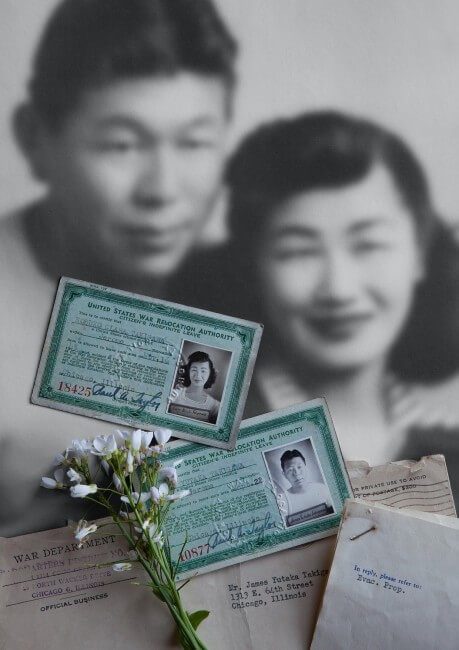
This World shows a Japanese woman, presumably Takigawa’s mother or grandmother, looking straight ahead and serene. Layered atop her image is a newspaper cutout quote that reads, “The great majority of our aliens are harmless people…” Japanese calligraphy drips down the page atop the quote. Layered atop the calligraphy is a piece of upright pink and white fabric that’s so vibrant that the viewer can almost feel every wrinkle and fold.
Documentation and artifacts in the form of newspaper cutouts, camp instructions, and identification cards are used as foregrounded objects to provide context. The background of Citizen’s Indefinite Leave appears to be a wedding photo of Takigawa’s parents. Layered atop the photo are images of their faces again, this time appearing separately as headshots within their Citizen’s Indefinite Leave cards. The bright green documents reveal their tenuous acceptance as U.S. citizens and, juxtaposed against their happy wedding photo, results in a contradictory picture.
In A Jap’s A Jap and EO 9066, pine needles create vertical and horizontal lines to replicate barbed wire or bars. The subjects in the background appear imprisoned or subjugated by the rhetoric and documents that keep them pinned.
Apart from these two images, the use of collage does not detract from the background images. The objects in the foreground have been placed with care, not only for their messaging, but for their proportion, balance, and color. The blurred black and white backgrounds and strategically colorful foregrounds have an almost calming effect.
It is only when one gets closer to the images and examines the details that discomfort sets in. This could be an analogy for peeling the layers of history and memory. One can find a lot that is ugly in history. For Takigawa, it seems, the beauty is in finding balance.
